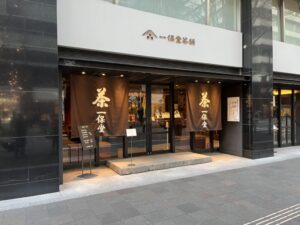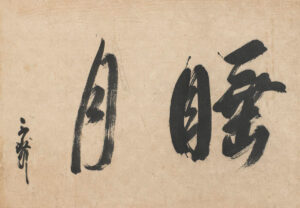
AI, With a Dash of Umami
By now, you’ve surely heard about OpenAI, Generative AI, AGI, and our imminent doom as a species. If not, don’t worry. The AI really doesn’t care.
So, while we’re waiting for ChatGPT to come and take us down, I suggest we make a cup of tea and savor our last moments together.
That’s exactly what Sen no Rikyu did, way back in the sixteenth century. Rikyu was a tea master, renowned for an austere and mindful approach to the Japanese tea ceremony (chanoyu) that used a rustic tea house, seasonal elements, and commonplace objects. He advocated a mindset captured in the phrase ichigo ichie (one life, one meeting) that emphasizes the transience and uniqueness of every moment and encourages one to cherish each encounter as if it were a once-in-a-lifetime opportunity.
His message hit the target. Rikyu became tea master and connoisseur to Japan’s highest samurai warriors. Alas, that familiarity led to his undoing when he annoyed the Top Samurai. In 1591, at the age of 70, Rikyu was ordered to commit ritual suicide (seppuku), which he did with his characteristic sense of the moment.
As cool as Rikyu was, I really hope to be spared his grisly fate should I annoy the Top Bot.
But, if I’m not spared, I’m going out with a cup of Jade Dew. That’s the translation for gyokuro, a shade-grown green tea sold by Ippodo, our favorite tea store. Founded in Kyoto in 1717, Ippodo has a shop in Tokyo’s Marunouchi district that provides a superb spot to savor one’s last cup of tea.
 Image source: Mike
Image source: Mike
Ahhhh, the deep satisfaction that comes with savoring a cup of tea. According to Ippodo, what distinguishes gyokuro and another shade-grown tea called matcha, which is having a global moment, is the high level of umami. A little bunny cake inspired by the Year of the Rabbit filled with red bean paste only adds to the UQ (Umami Quotient).
 Image source: Mayumi
Image source: Mayumi
No animals were harmed in the consumption of this delicacy.
Umami is a basic taste that is described as savory or meaty. It is one of the five basic tastes along with sweet, sour, bitter and salty, and is often associated with the flavor of monosodium glutamate (MSG), a common food additive used to enhance the taste of savory foods. Umami has been recognized as a distinct taste in Japan for over a century, but has more recently gained recognition in the Western world.
Damn, you’re good (ooops, sorry, no offense meant). Okay, one more question: Who discovered umami?
The discovery of the taste sensation known as umami is credited to Japanese chemist Kikunae Ikeda in 1908.
Kikunae Ikeda was a Japanese chemist and professor at Tokyo Imperial University. He is best known for his discovery of the taste sensation known as umami, which he identified as a unique and distinct taste distinct from the four basic tastes of sweetness, sourness, bitterness, and saltiness. Ikeda extracted and identified the glutamate compound as the source of the umami taste in seaweed, and later developed a way to mass-produce monosodium glutamate (MSG), which is now widely used as a flavor enhancer in many foods. Ikeda’s work laid the foundation for the study of umami and its role in the science of taste and flavor.
Sigh! At least Lord Top Bot forgot to mention that Ikeda went on to form a company called Ajinomoto, which now employs 33,000 people on annual sales of USD 8 billion. Not bad for a lean startup based on seaweed.
I’ve been a Rikyu fan since my earliest days as a graduate student immersed in the study of the sixteenth century. Rikyu, a man who lived his life of tea on the sharp edge of a violent world, produced a sublime piece of calligraphy called Suigetsu, meaning Intoxicated by the Moon.
 Image source: Rikyu
Image source: Rikyu
Surely, Top Bot missed the deeper and achingly transient nuance of Suigetsu. I asked what Rikyu meant by Suigetsu. The answer took me back to my days as a professor of Japanese history when students, not knowing the answer to a question on the final exam, just made stuff up. This and that. Yeah, yeah. Eyes rolling.
Oops, sorry, gomen. My mistake. Mayumi had joined the interrogation and directly queried in Japanese, asking for an English translation. Much better. A+
In his teachings, Sen no Rikyu used the term “Suigetsu” to refer to the reflection of the moon in a calm body of water, symbolizing the fleeting nature of life and beauty. In the context of tea ceremony, the symbolism of “Suigetsu” serves as a reminder to cherish each moment and to remain mindful and present during the tea ceremony.
Lovely, I must admit. I need a cup of tea. I hope you’ll join Mayumi and me as we savor this precious moment together. Mmmmm…the delicious umami of life’s fleeting beauty.
